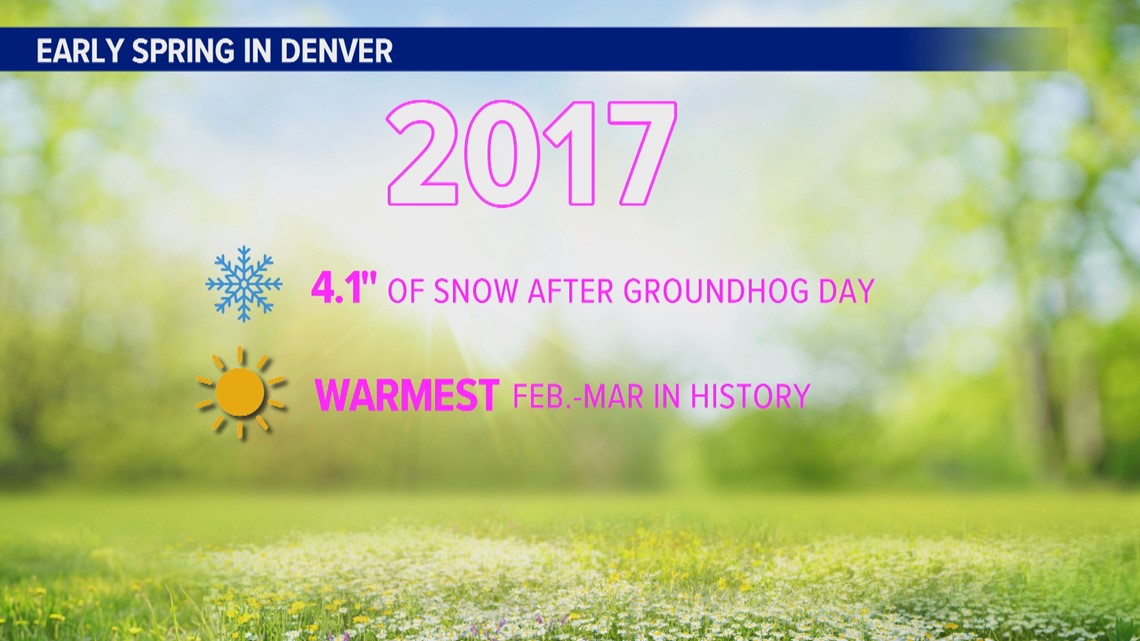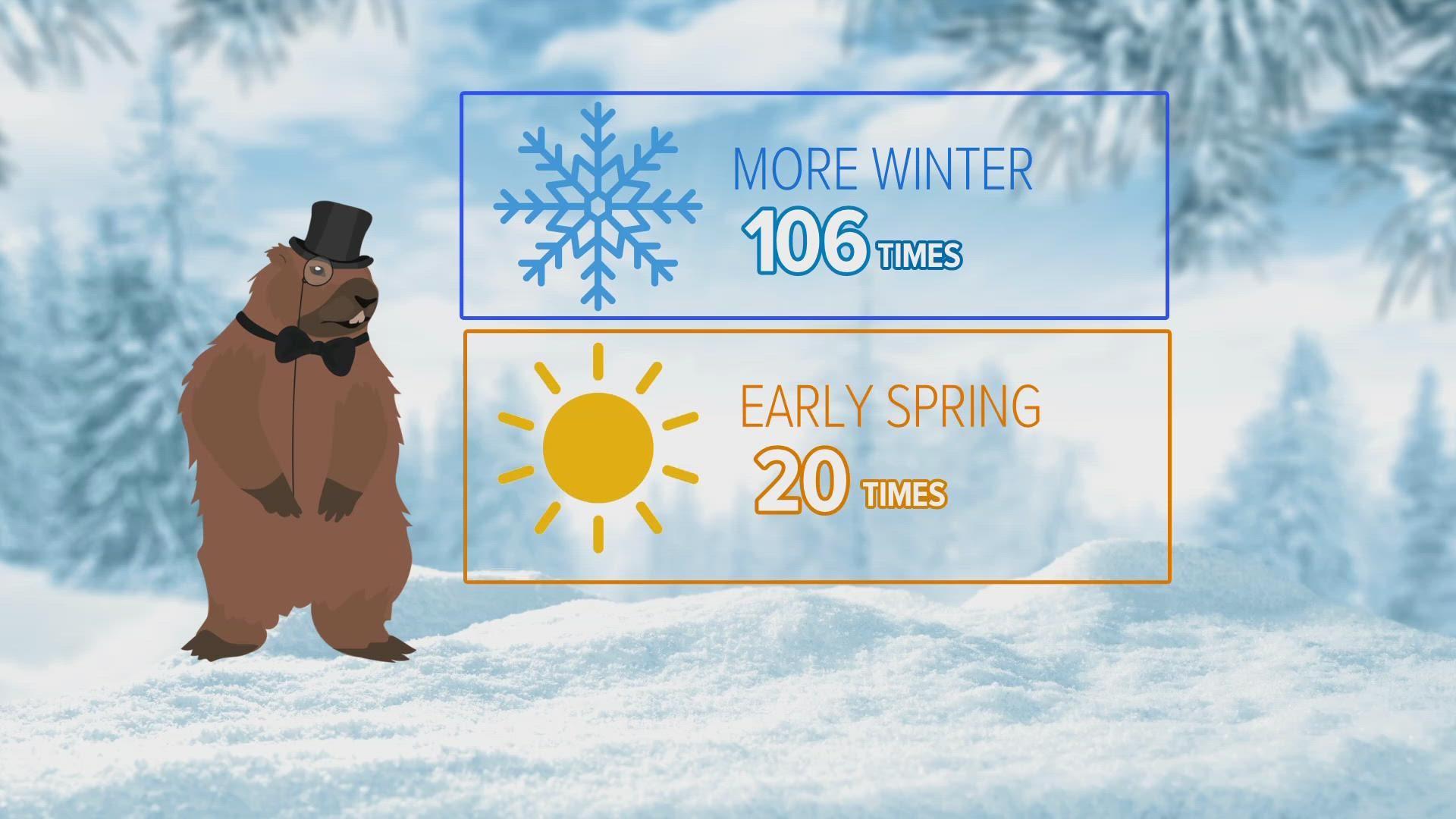DENVER — Six more weeks of winter. That's what the famous rodent forecaster from Pennsylvania predicted on Thursday morning.
Well, in Colorado it’s going to feel like an early spring after the three months we just went through.
How accurate is that rodent anyway? He almost always predicts the continuation of winter - 106 times since 1887. He’s only predicted an early spring 20 times.
It certainly depends on how you define spring weather. On the Front Range, we usually don’t think it’s spring until we get our first one-foot snowstorm.
‘Don’t plant your garden until Mother’s Day’ is the saying around here. And last year, that didn’t even work. It dumped heavy wet snow on May 20.
Punxsutawney Phil did call that one right for us, but he was wrong in his home state, as Pennsylvania got nothing but sunshine after March 1.
An analysis by NOAA used average temperatures in February and March to grade the groundhog. Using that metric, he’s been 40% accurate over the last 10 years.
NOAA doesn’t predict the beginning of spring but their seasonal forecasts have been just more than 60% accurate, getting about every two out of three forecasts right for northeast Colorado over the last 10 years.
Although this winter’s forecast of average temperatures looks like it will be a bust unless February ends up being warm enough to bring the average back up to average. It would have to be near-record warm, so that's not likely.
Using snow as a metric, you could say that Punxsutawney Phil is right every year he predicts more winter for Denver, because it's snowed after Groundhog Day for 141 consecutive years.
The last time he predicted an early spring was 2020 – he pretty much nailed that one.
You could even say that the Colorado Front Range had an early spring that year. There were a lot of warm sunny days, but Denver still got nearly a foot of snow that spring.
The last true early spring in Denver may have been in 2017. There was only 4.1 inches of snow after Groundhog Day – the least in Denver history.
And the average temperature in February and March that year was also the warmest in history.


SUGGESTED VIDEOS: Colorado Climate

